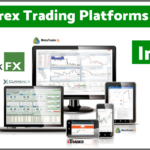Why Trade Forex (FX) Through a Self-Directed Traditional IRA or Roth IRA?
Why Trade Forex (FX) Through a Self-Directed Traditional IRA or Roth IRA?
Most working Americans know the importance of saving for retirement, and many act on this knowledge by creating and maintaining some kind of retirement account, either in the form of an employer-sponsored 401(k), a Traditional Individual Retirement Account (“IRA”), a Roth IRA, a life insurance policy, or another kind of retirement account.
But what many of those Americans don’t know is that you can trade forex (FX) using some of those retirement accounts. And what even fewer realize are the numerous advantages to doing so.
The advantages of trading FX through an IRA
In fact, not only can trading FX through a self-directed Traditional IRA or Roth IRA give you more say in how your money is being invested, there are many advantages to trading FX through your IRA that you can’t obtain in any other way.
While the advantages vary from person to person depending on each investor’s particular situation, some of the biggest benefits include:
- Gain control over the investment of your retirement funds
- Eliminate fees paid to investment advisors
- Avoid additional taxes on your trading gains
Traditional retirement accounts can be limiting
One of the biggest complaints people have about their retirement accounts is the lack of a personal relationship between the investor and the investment advisor.
Like many Americans, your retirement funds are probably handled by your employer or a third-party investment manager such as an investment bank or brokerage firm. These kinds of situations typically involve multiple degrees of separation between you and your retirement funds.
The lack of a personal touch may lead to an investment portfolio that fails to meet your specific investment needs or desires.
While your investment advisor will do his best to find the most appropriate financial products in which to invest your funds, they’ll typically do so without only minimal (if any) input from you. This kind of in-depth understanding of your personal trading objectives and financial goals may be missing, as a result.
With a self-directed Traditional IRA or Roth IRA, you can be empowered to create your own portfolio. You no longer have to count on a third party investment manager to make important investment decisions for you—you can take control of your own financial destiny and ensure that your investments are right for you.
Eliminate high fees and save more with your IRA
You work hard for every dollar you tuck away into your retirement account. So why would you want to give away more than you should in the form of high fees paid to investment managers?
The purpose of a retirement account is to save for your future, but when a third-party investment advisor controls your retirement account, you have to pay for this service either through a percentage of your assets under management or a flat fee and/or brokerage commission.
With each fee levied on your retirement account, you are cutting into your financial future. And depending on the size of your growing retirement account, these fees can end up taking a large and unwarranted piece of your pie.
Fortunately, there is an alternative to paying out these service fees to third-party investment managers. With a self-directed Traditional IRA or Roth IRA, fees are normally limited to a reasonable annual fee and other incidental fixed fees.
This means you hang on to more of your hard-earned retirement funds to invest and save for your future.
Decide how and when to invest your retirement funds
As we mentioned earlier, many working Americans save money for retirement and future aspirations by contributing a portion of their salary to their Traditional IRAs and Roth IRAs on a yearly basis.
But once those contributions have been made, that money becomes inaccessible and untouchable until the time designated by each specific retirement account.
However, with a self-directed retirement account, you can access your tax-deferred retirement money and trade in the FX market with it whenever you want. So, not only does a self-directed Traditional or Roth IRA free up your retirement funds to trade FX, it also allows for more flexibility in other types of investing, as well.
Protect your trading gains from yearly taxes using your IRA
Most retirement accounts are very tax-efficient. With a Roth IRA, the taxes on your retirement funds have been previously paid, while in the case of a Traditional IRA, the taxes will only be paid at some point in the future when the funds are withdrawn.
When you trade FX using your Traditional IRA or Roth IRA, you are still enjoying this tax advantage. Whether you trade through a Traditional IRA or a Roth IRA, your trading gains do not carry any additional tax burden.
This means that you won’t have to pay annual taxes on your trading capital, and you can ensure that your gains will not be double-taxed. Instead, you’ll have the ability to compound your forex trading gains over a long period of time while taking advantage of the tax-efficient structure surrounding traditional retirement accounts.
Which retirement accounts allow you to trade FX?
Now that you understand the great advantages to trading FX through your Traditional or Roth IRA, you’re probably wondering how you can go about setting this up.
It’s important to note that not all retirement accounts allow for FX trading. Let’s examine your retirement account options and discover how you can take back control over your investments.
As a reminder, Traditional and Roth IRAs are two slightly different kinds of retirement accounts that are typically held by large investment banks or brokerage firms. These banks or firms provide custodial services that ensure retirement funds are not combined with non-retirement funds in order to preserve their tax treatment.
Both Traditional and Roth IRAs are a good way to increase your annual contribution to retirement and ensure your retirement options are diverse while still being tax-advantaged.
Can any IRA be used for FX trading?
As with any for-profit business, the investment banks or brokerage firms providing custodial services to your retirement account are doing so to make money.
While they may provide these custodial and investment management services for free, they count on earning money through your retirement account in the form of either management and performance fees, or brokerage commissions when they invest your funds.
The downside to this tradeoff (besides the potentially high fees) is that you are forced to invest or have your retirement funds invested solely in the financial products offered by the bank or brokerage acting as your custodian.
Going back to the previously discussed issue of third party investment advisors, it’s this type of self-interested investing that leads to the creation of a portfolio that fails to meet your particular investment needs.
These custodians also typically do not offer you the ability to invest in the FX market. Keep in mind that, by volume, the FX market is the largest financial market in the world.
The solution: a self-directed IRA
Fortunately, there is an easy way to solve the problem of high fees and limited investment options posed by most Traditional and Roth IRA account custodians.
For a small fee, it is possible to create your own self-directed Traditional or Roth IRA.
With the help of an established IRA custodian that allows for self-directed investments, you will be able to set up various investment accounts in the name of your Traditional or Roth IRA, including FX trading accounts with US-regulated forex brokers.
A self-directed Traditional or Roth IRA grants you the freedom to invest your retirement funds in the FX market, and empowers you to take control over your financial future by creating a portfolio specifically tailored to your investment needs and goals.
What about your old 401(k)?
A 401(k) is a kind of retirement savings plan that is named after a section of the US tax code. According to the tax code, you are allowed to contribute some of your salary before taxes are taken out.
Because of this, 401(k) plans are popular with companies to offer their employees as a savings plan option, and many companies make additional contributions on their employees behalf to increase their retirement savings amount. A generous 401(k) plan is a perk that can make a company more attractive to potential employees.
If you have an employer-sponsored 401(k) plan, it is most likely managed by a custodian or investment bank chosen by your employer. This savings plan is a way to cost-effectively save for your retirement.
But most Americans don’t always stay at the same job for the duration of their careers…so what happens when you change jobs and no longer work for the employer that sponsored your 401(k)?
A new home for your 401(k)
In the event that you’ve left the job that originally provided your 401(k) savings plan, you have several options. First, you could roll over your existing 401(k) into a similar plan offered by your new employer.
But what if your new employer doesn’t offer a similar savings plan? No problem! You can always leave your existing 401(k) plan in place. But the downside is that you will no longer be able to make contributions to this retirement plan, as you no longer work for the company that sponsored the plan. And, of course, the previous employer will no longer make contributions to the plan either.
In this instance, you have a third option of rolling over your existing 401(k) plan into an IRA. In each case, you protect the special tax treatment given to the original employer-sponsored 401(k) plan.
However, as we will discuss next, there is a fourth and potentially even more advantageous option for your old 401(k) plan.
Convert your 401(k) into a Self-Directed IRA
As we’ve previously discussed, a self-directed IRA affords you the ability to invest in the FX market, which grants you the greatest control over your financial future.
The good news is that it is possible to convert your old 401(k) into such a self-directed IRA account. And the better news is, the steps you need to take to achieve this are relatively simple:
- Set up a self-directed IRA with one of the IRA custodians who permit FX investments.
- Work with your IRA custodian to roll over your existing funds from your 401(k) plan into your new self-directed IRA.
Within a couple days, you will actively control your retirement funds and have the power to invest them as you see fit.
A further note to former government employees who contributed to a 403(b) or similar government-sponsored retirement plan: You can convert those funds into a self-directed IRA and invest in the FX market as well. As we’ve outlined above, the steps are almost identical to converting a 401(k) plan into a self-directed IRA.
Navigating the waters of forex trading
By now you can see why thousands of Americans are using their Traditional IRA and Roth IRA accounts to trade in the FX market.
And while you may understand the advantages to FX trading through self-directed accounts, finding a custodian for your retirement account that permits self-directed trading and an FX broker that also works with that custodian can end up being more challenging than you might think.
Unfortunately, countless would-be investors have wasted their valuable time, money, and patience trying to set up a self-directed IRA for FX trading on their own. Without proper guidance as to which custodians allow for FX trading and which FX brokers work with them, the process can be complicating and frustrating.
When attempting to set up a self-directed IRA for FX trading, knowing which custodians to contact and which brokers accept retirement account clients is an important first step.
Let’s start with the main custodians: Midland IRA, Equity Trust, and Millennium Trust all offer self-directed IRAs and are integrated with regulated US forex brokers.
These custodians will complete the paperwork required to open an FX trading account in the name of your Traditional or Roth IRA, and will help you with the conversion or roll over of your Traditional or Roth IRA, 401(k), or other retirement account.
After the creation of your self-directed Traditional or Roth IRA, you must open an FX brokerage account in the name of your new IRA. Your custodian and your broker will provide careful instructions for doing so.
The process itself is simple, and your custodian will assist you in the completion of your plans to open an IRA account with your chosen FX broker.
Forest Park FX can help
Forest Park FX understands the importance of your ability to manage your retirement savings and can support your mission to take back control of your financial future.
Through our professional relationships with the main custodians mentioned above and the US-regulated FX brokers, we can help you create and utilize a self-directed Traditional IRA or Roth IRA for FX trading. We can help put the power back in your hands.
And, by working with Forest Park FX, self-directed IRA clients will receive a cash back rebate on their trading which may help to subsidize the costs of their custodian.
For more information on how to trade FX through a self-directed Traditional IRA or Roth IRA, please contact [email protected].
Forex trading carries significant risk of loss. Forest Park FX has not independently verified and does not endorse the content contained on any third-party links.








